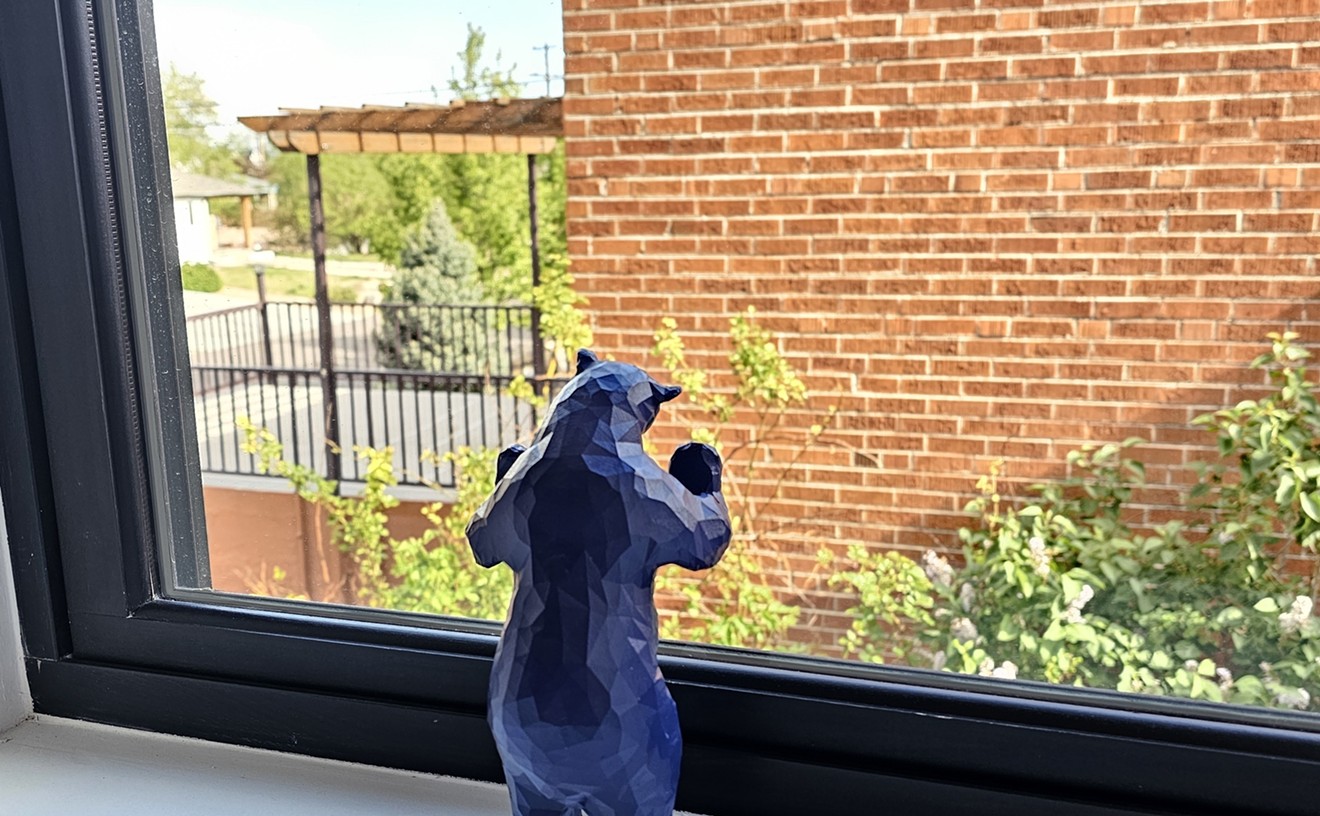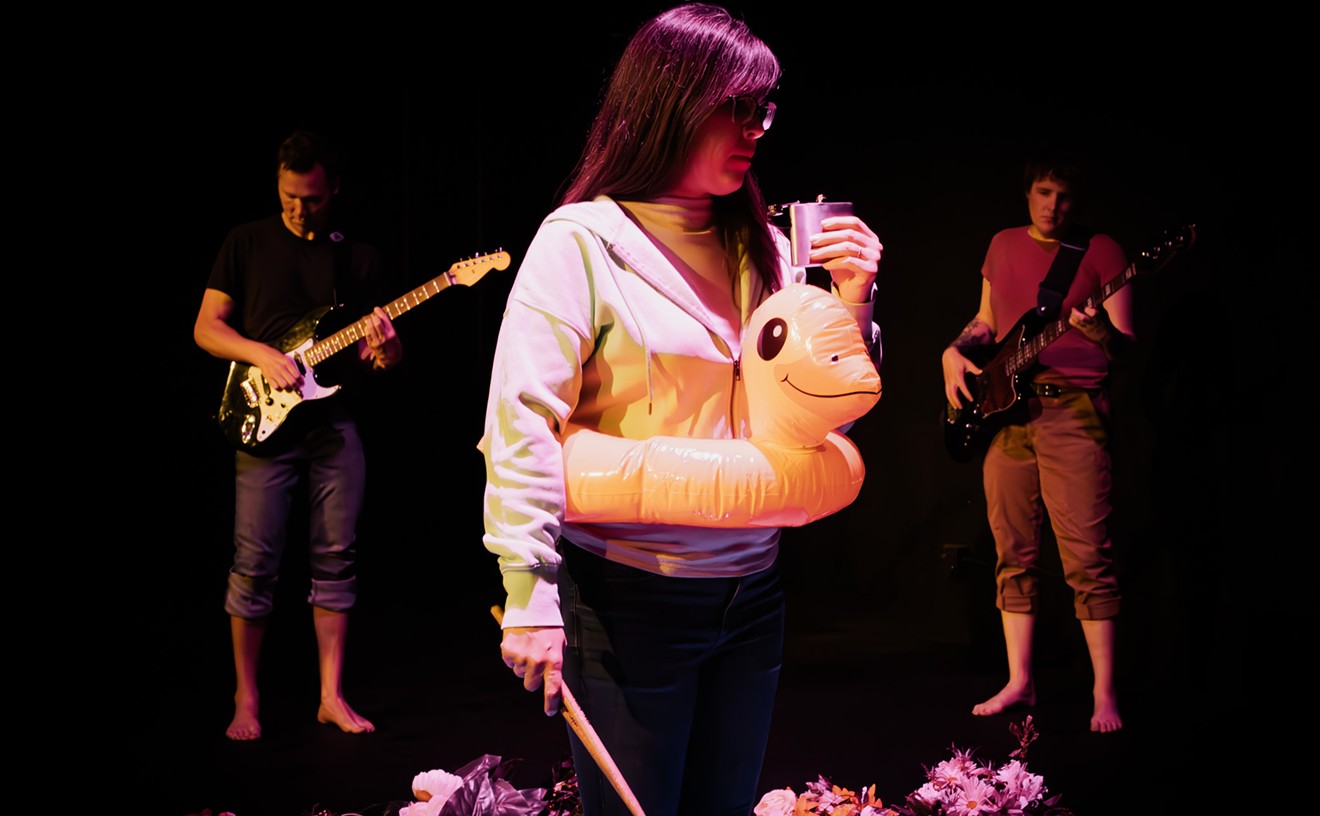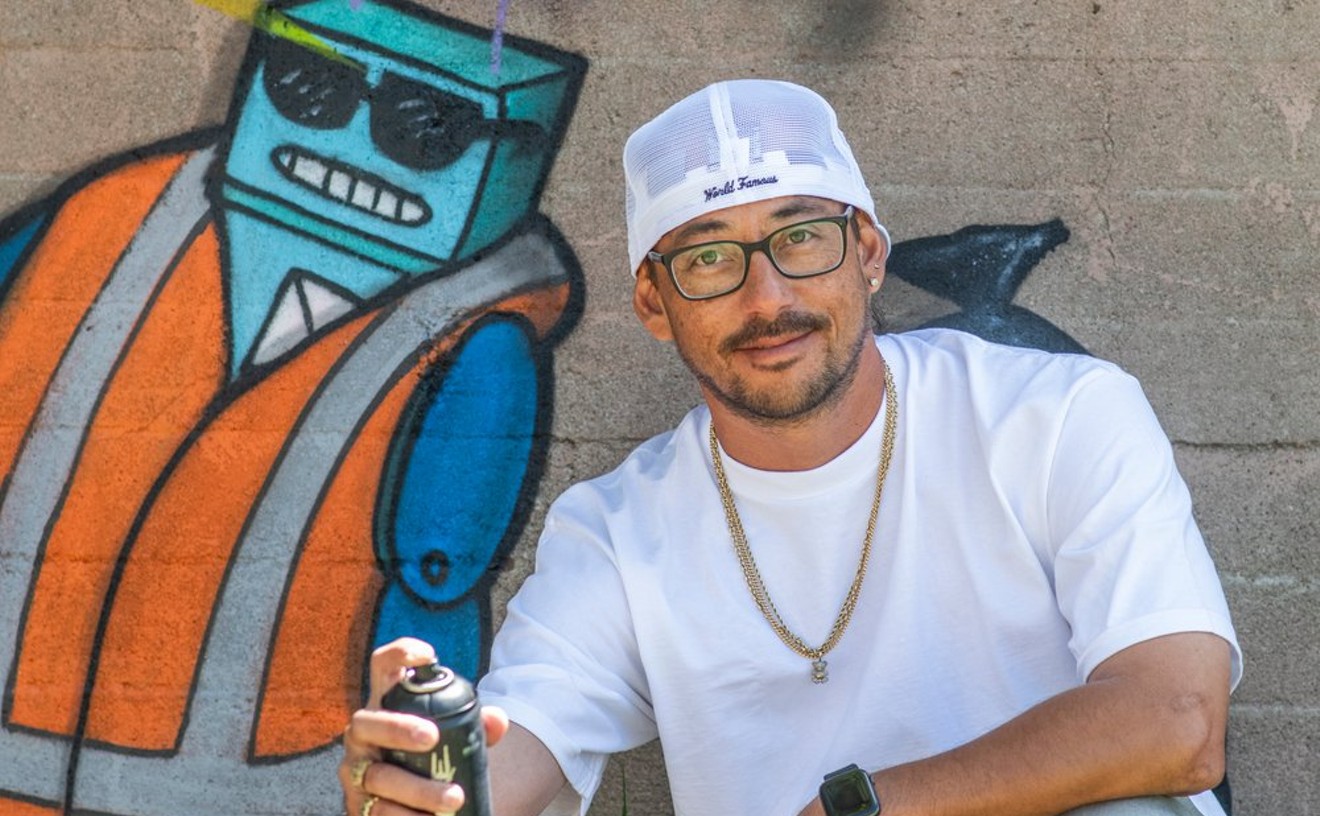Udinotti's abstract expressionism springs from her roots as a Greek immigrant. A poet and editor as well as an artist, she is strongly influenced by such figure artists as Giacometti, Cesar and Marini. Her sculptures, especially, are so purely International Abstract in style that they could have been made in 1954 as easily as in the present--there is nothing "neo" about these welded-steel shapes crowded with tiny, stick-figure people.
Her paintings, however, are a different story. Though firmly rooted in the academic abstract expressionism of previous decades, the lush, dark surfaces explode with complex, evocative textures and rich, deep-toned effects. Executed with power and restraint, the wraithlike beings that haunt these canvases might almost be the captured emotions and spirits of departed loved ones. Udinotti's paintings rumble with murky references to dismemberment and disjuncture, pain and missed opportunities. Human silhouettes are filled in, then erased, as if to symbolize the impermanence of life and relationships. Some of the characters are missing part of a leg or an arm, signifying the inability to connect. Occasional twosomes, flawed but reaching out tentatively for each other, add a glimmer of hope to the artist's dark vistas.
One such "couple" painting is "Shadow Image #114." This oil-on-Masonite work presents a black-brushed square of emptiness, containing only a few indistinct reflections and smeary, rainy forms. In the middle of this misery stand an abstract- expressionist man and woman, caught, apparently, in mid-howl. The woman clings to the somewhat sturdier figure of the man, but her blood-colored shape is ephemeral, a dwindling ghost apparently unseen by her oblivious, suffering partner. The man's figure ends at the knees, floating in the forbidding blackness.
Not all of Udinotti's paintings are as chilling. In "Shadow Image #136," the people are more substantial, with terra-cotta colors warming their sketchy flesh. The man and woman depicted are of similar stature and have a firm grip on each other, almost becoming one where they meet. Only the ominous black background and the couple's erased and faded feet show that the world they inhabit, though less menacing than much of Udinotti's imagery, is still founded on a dangerous unknown.
With content this saddening and indistinct, one might wonder what the attraction is to these paintings. Quite simply, it is the artist's rich, scrabbly textures and the evocative contrasts between dark and light, line and erasure that energize her works. Udinotti's pathetic figures blaze out of the brooding darkness like lanterns in the night, communicating life and reality in the midst of dreams and riveting the eye with their positive existence.
The figures in Jeff Bertoncino's paintings are even less "there" than Udinotti's. Bertoncino's enormous, textural abstracts, full of fascinating billows of somber colors and scribbly birds' nests of forms, seem to toss up human shapes and skeletal lines like vegetables boiling in a stew.
At first glance, the two artists are so similar in style that they might be one. But a closer look reveals subtle differences: Where sorrow and loss motivate Udinotti's canvases, Bertoncino's works seem driven by the utter randomness of life and the universe; a cool detachment from the body and its imperatives flavor these big paintings. And while the use of darkness and contrasting light is as important to Bertoncino as it is to Udinotti, in the former's works the effect is one of clarity and analysis rather than roiling emotion.
Agnese Udinotti and Jeff Bertoncino, through July 16 at Mackey Gallery, 2900 West 25th Avenue, 455-1157.










